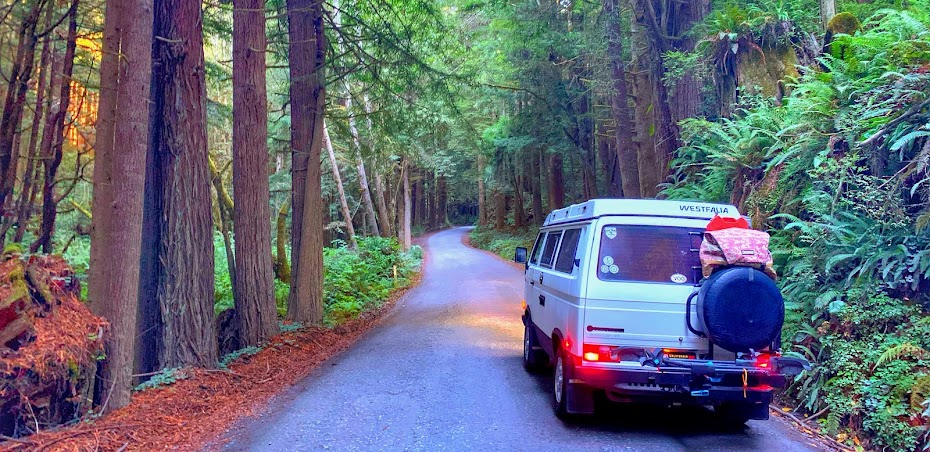 |
| VanCafe's reseal kit "B" with the metal fittings. I used the plastic version. |
Replacing all of these is pretty easy, but dropping the tank can be a pain, mainly due to all the expansion and evac lines that run to it. I've now got it down to a system and can drop the tank in about 15-20 minutes. It just takes some practice. The crossover tube is by far the most difficult to re-install, but it helps to remove the strap that hold it up so the floorboard of the van. I now leave mine off. Also, I've found that if your spare tire is removed, as well as the clam shell, you can access the driver's side part of the crossover tube a bit better, especially if your hands are big. I have trouble getting my arm/hands in above the shock tower, and then when I do, I'm limited on movement.
 |
| Crossover tube/fitting on the driver's side. |
My new motor is a gasser, so when I installed it this month, I removed the tank again, and emptied and rinsed it out with gas. I added a few gallons of gas, shook it around, tipped it up and down and tried to free up anything that I could. I figured that the tank was now ready to accept gasoline on a regular basis... so I thought.
After the conversion, I added fresh gas (approx. 5 gallons) and got the motor running. It ran great. After getting everything dialed in and road-ready, I took it out for spin and it starting loading up/bogging down. It did it a few times and then eventually stalled. I recognized the issues as fuel related, so I dropped the fuel pump and filter and immediately saw crud on the inlet side of the pump. I took the outlet hose off the tank and nothing flowed out, and when I could get flow, it had a bunch of silt in it.
So, I dropped the tank again and inspected the contents. Full of crud and the inside walls/bottom were nasty with all kinds of "junk".
 |
| Looking in through the sending unit port. The 3 marks are where I scraped some samples with a screwdriver. |
 |
| The "fresh" unleaded fuel that came out :-0 |
Luckily, my fuel pump and filter caught it all I'm pretty sure the injectors never saw much debris coming their way. I'll probably inspect those next and run some injector cleaner through the first few tanks in my brand new fuel tank.
I ordered a Spectra VW3C tank from Amazon a few days ago and it's scheduled to arrive today. I did some research and it "appears" that most of the distributors/resellers are sourcing the same tank. There are numerous threads about this on TheSamba. I opted for Amazon because we have a prime account and the shipping was free. I cringed at the $40 shipping costs from my favorite Vanagon suppliers and decided to chance it with Amazon. I've read good reviews on the Spectra tank and don't anticipate any problems with it. I fully recommend ordering from the Vanagon specialists when possible, but after having just spent $1000000000 on my conversion, I'm feeling cheap for at least a week or two.
Tank Differences:
If you ARE replacing your tank, you should be aware that there are 3 different types of tanks. The main difference is the size on the filler tube hole and the outlet fitting. My diesel tank had approx a 74mm filler hole, which I think was common for 1980-83, then it got smaller in 84-85 and even smaller from 86-91. Just double check what you need. Filler necks are easily swapped, but also hard to find. I upgraded to the newer style tank because it also has a 12mm outlet, which allows more flow and also mates up nicely with the fuel pump which has a 12mm inlet. However, I had to find a newer style filler neck made of plastic, but it also comes with an anti-siphon valve on the end.
 |
| Newer style filler neck (plastic) |
 |
| the New Tank arrived (Spectra VW3C). |
Van Cafe has a nice write-up on the difference of the filler tubes and how you can tell the difference.
